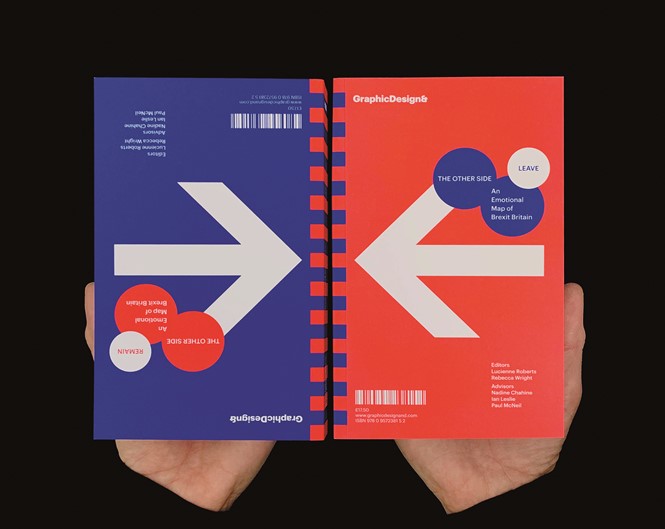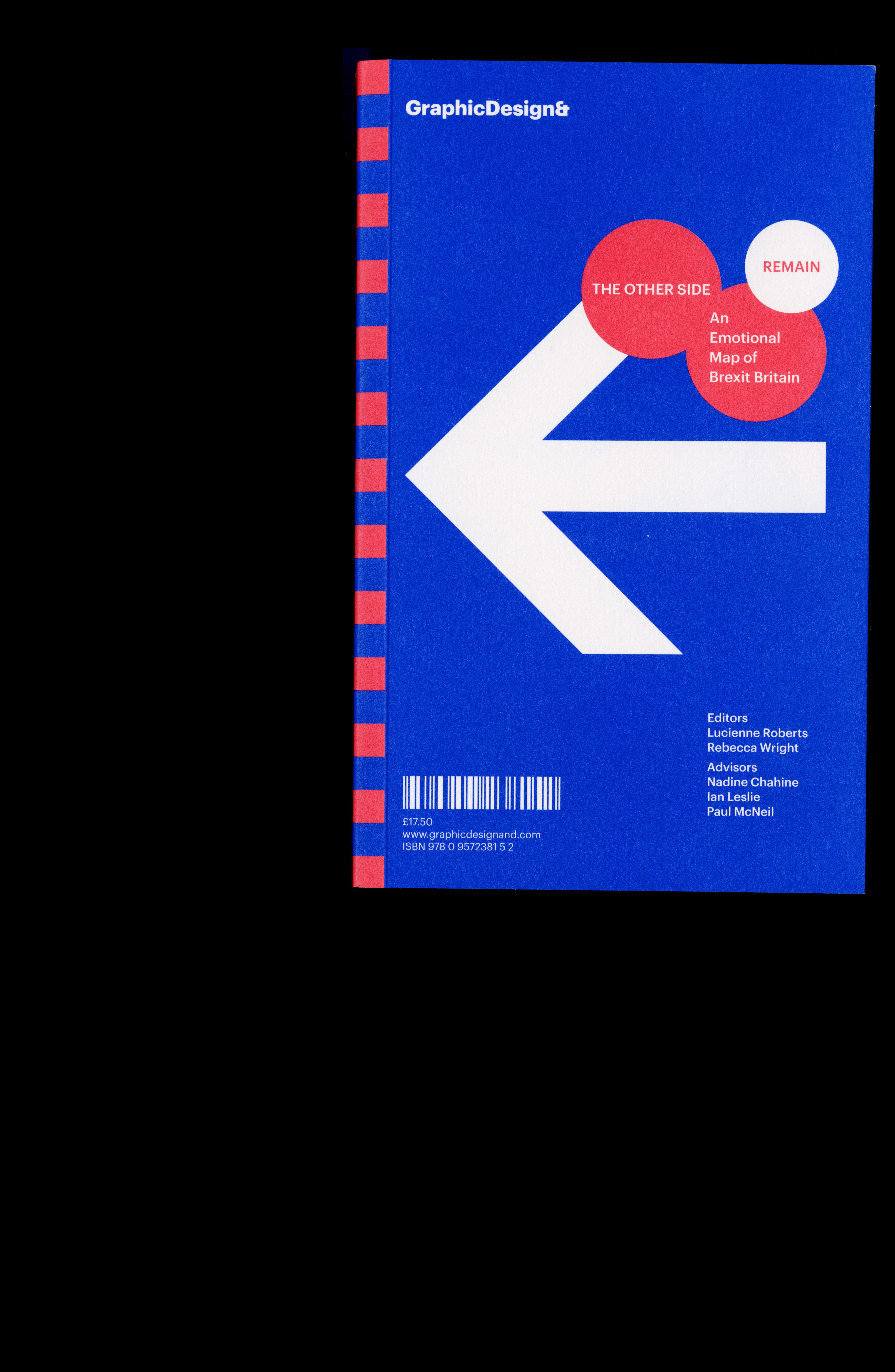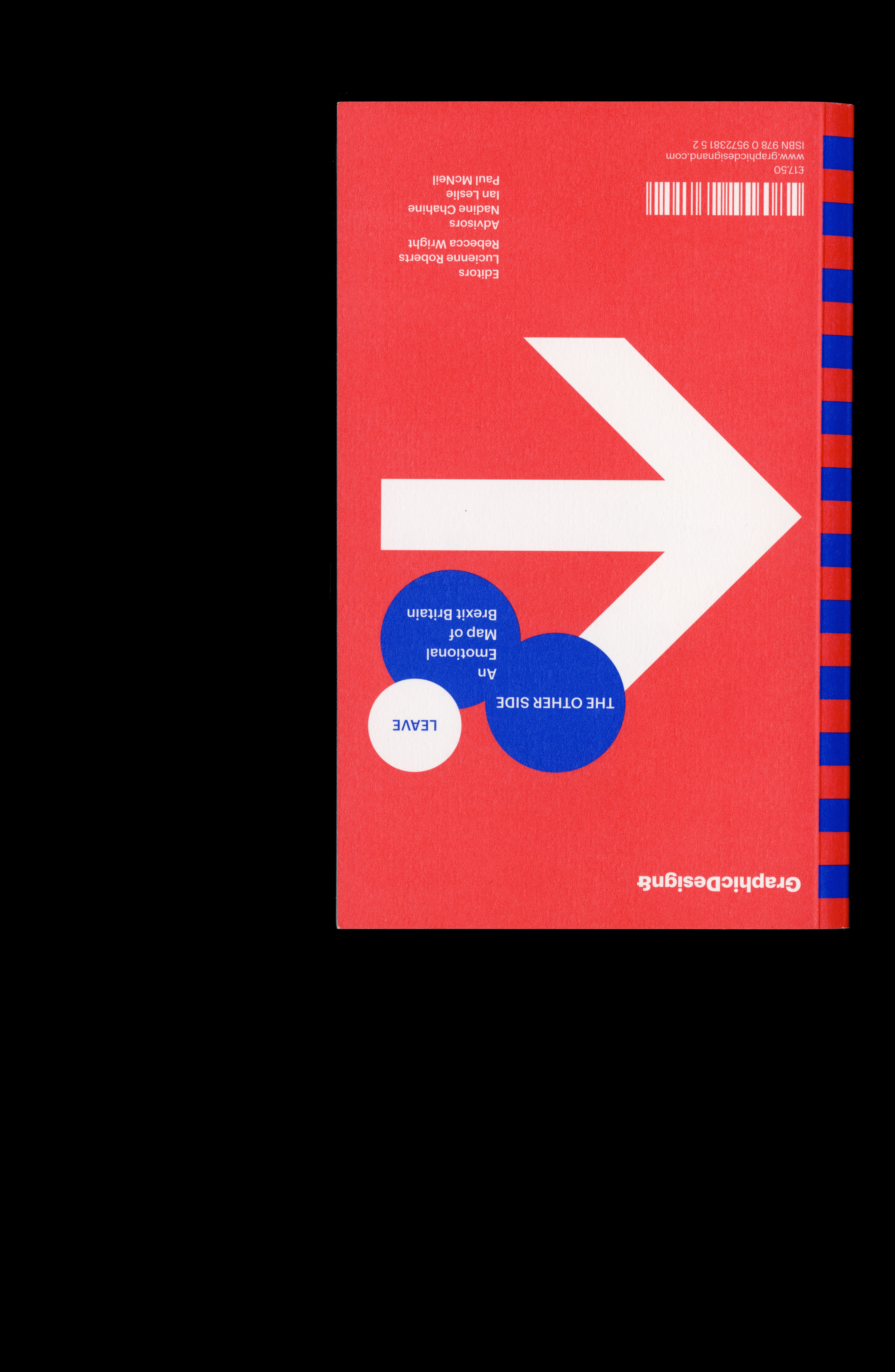A house divided

Going inside the branding, positioning and communications tactics from the 2016 Brexit leave and remain campaigns, a new book from GraphicDesign& uses a unique design element to explore a divided Britain. ‘The Other Side: An Emotional Map of Brexit Britain,’ was written by Lucienne Roberts and Rebecca Wright to encourage empathy, not to change minds. Presented as a double-ended book, 26 leave and 24 remain voters from around the UK share their views on the losses and gains from the decision to leave the EU
In a letter addressed to all MPs, GraphicDesign& delivered a copy of ‘The Other Side: An Emotional Map of Brexit Britain,’ to each elected parliamentarian. It read, “Dear member of the UK Parliament, The general election on 12 December 2019 delivered a leave-supporting Conservative majority of 81 seats. However, second-referendum/remain-supporting parties secured over 52% of the overall vote. We will therefore leave the EU as a still divided nation – across countries, regions, families and friends. Humanity is facing unprecedented challenges, never has coming together been more important, and yet, so far, none of our leaders has facilitated dialogue to unite us. This book is an attempt to reintroduce the two ‘sides’ of the Brexit debate to one another. We, perhaps naively, hope it will be a precursor to understanding, compassion and a more conciliatory politics. We call upon politicians to recognise the validity of the diverse views presented here. It is incumbent on you to address the concerns of us all. “
2016 EU Referendum: Three leave campaigns
In 2006 Nigel Farage became UKIP leader, campaigning on a platform that included immigration controls. In the 2014 European elections UKIP made gains, often from the Conservatives. Under pressure from Eurosceptics in his own party, prime minister David Cameron included in the 2015 general election manifesto a commitment to hold a public referendum on EU membership if the Conservatives achieved a majority. They unexpectedly did so.
There were multiple leave campaigns in the 2016 referendum. ‘Vote Leave,’ UKIP and Leave.EU all played on people’s fears about immigration. Targeted ‘Vote Leave’ Facebook adverts employed maps and infographics that falsely claimed Turkey was joining the EU and immigration from the region was imminent. Leave.EU Twitter posts included images of Islamic terrorists to incite similar fears. UKIP’s ‘Breaking Point: The EU has failed us all’ poster showed a long line of refugees crossing the Croatia-Slovenia border. It was criticised by leave and remain campaigners alike; Twitter users drew attention to its similarity with Nazi propagandist footage.
In 2019 the House of Commons Digital, Culture, Media and Sport Committee published its final report on an 18-month investigation into disinformation and fake news. This included scrutiny of campaign materials in the EU referendum. The committee concluded that ‘Democracy is at risk from the relentless targeting of citizens with disinformation,’ and that electoral law was ‘not fit for purpose.’ There were a number of allegations regarding unlawful campaigning during the EU referendum and in 2018 the Electoral Commission, an independent body that regulates party and election finance, found that ‘Vote Leave’s’ spending ‘broke the electoral rules set out by Parliament to ensure fairness, confidence and legitimacy’ and fined it £61,000.
‘Vote Leave’s’ slogan ‘Take Back Control’ resonated across the UK political spectrum, as did the message emblazoned across its campaign bus. While the £350 million figure was attributed to poor research, a study by the LSE’s Sara Hobolt showed that anger at the ‘cost of EU membership’ became the third most cited reason for supporting leave in the weeks before the vote. The NHS, having suffered cuts under government austerity programmes, inadvertently became a ‘Vote Leave’ campaign tool in one of the most memorable images of the referendum campaigns.


2016 EU Referendum: Government remain campaign
With the benefit of hindsight, it is easy to see why the government’s remain campaign failed. Research published in the Journal of European Public Policy referenced a growing divide ‘between those who feel left behind by the forces of globalization and mass immigration and those who welcome such developments.’ A 2016 YouGov poll showed that 72% of the British public didn’t trust ‘the ruling elite.’ Considered against this backdrop, the confident remain identity, despite its clear evocation of the UK flag, seemed to be speaking only to the people who reap the benefit of open markets, liberal economics and increased immigration.
A government 16-page A5 leaflet went to every household in the country. A mix of simple text, data and large images, it employed a visual language associated with authoritative, neutral information design. While being professional and confident, it appeared top-down and, most importantly, emotionally detached. It didn’t speak to those who felt left behind, to the people for whom voting Leave was often an expression of ‘frustration, rage, resentment, and insult – as well as hope that a vanishing way of life could be saved and a proud national identity celebrated’ wrote sociologist Craig Calhoun in ‘Populism, nationalism, and Brexit.’
Remain humour
At 72.21%, the turnout of registered voters for the 2016 referendum was high, but the margins were narrow. Leave won with 51.89% of the vote, leaving the UK bitterly divided – often on grounds of personal identity. Both of the UK’s main political parties pledged to stand by this outcome, although the nature of the future relationship with the EU was still to be determined.
As the government negotiated with the EU, and sought approval of its Brexit deal in Parliament, remain-supporting individuals and independent groups employed ingenuity and visual wit to argue for a second vote or to draw attention to the potentially negative outcomes of leaving the EU with or without a deal.
The mayor of London, Sadiq Khan, endorsed overt messaging during the 2017 New Year’s Eve fireworks, when the London Eye was lit up to resemble the EU flag, and eyebrows were raised when the Queen opened Parliament in 2017 sporting a blue hat circled with yellow flowers. The Queen’s dresser has since said this was pure coincidence.
‘The Other Side: An Emotional Map of Brexit Britain,’ was edited by Lucienne Roberts and Rebecca Wright, GraphicDesign&












